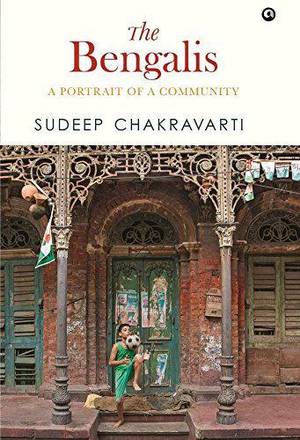
Cataloguing failures and frustrations of Bengalis, their sense of self, culture, and radical and reactionary politics
Portraits of a people are difficult to pull off, unless attempted with love, irony, and aplomb. Sudeep Chakravarti does not fall short on these counts in his whirlwind cultural, social and political history of the Bengalis, a community as notorious for its factiousness, chauvinism, and obstinate perseverance in self-harm as for its tolerance, cosmopolitanism, creativity and intellectual brilliance.
Written with verve, energy, and polish, and drawing on considerable resources, both anecdotal and archival, Chakravarti’s book takes its place beside other contemporary attempts at ‘collective’ portraiture, such as Jeremy Paxman’s The English (1998) and John Hooper’s The Italians (2015). Such attempts frequently founder on the need to both explode myths and sustain them. In The Italians, Hooper quoted Orson Welles’s famous insertion in Graham Greene’s script for The Third Man (1949), to the effect that Italy under the murderous Borgias produced the Renaissance, while five hundred years of democracy in Switzerland produced only the cuckoo clock. Chakravarti is alert to the dangers of such sensationalism, cataloguing Bengal and the Bengalis’ frustrations and failures with as much sympathy and perception as their undeniable record of achievement in the arts and sciences, and in the making of modern India and Bangladesh. The great strength of his account is that it treats the Bengalis, despite their self-imposed divisions, as one people, and accordingly looks at the history of both east and west — that is, both modern West Bengal and Bangladesh.
Literary, other pegs
A sense of history is at the core of this book’s success: the sections I read with most absorption were on the origins of the Bengalis, their mongrel ethnicity, their religious dissensions, their syncreticism and cosmopolitanism, their politics — radical and reactionary — and their formative historical crises, such as the 1943 famine, the Tebhaga land agitation, Partition, Naxalbari, muktijuddho (Bangladesh liberation war) and the birth of a new nation. Chakravarti’s own family, with its roots in East Bengal, and its network of connections across borders and religions, in Bangladesh and India (not to speak of the inevitable diaspora) provides an invaluable anecdotal substratum to the more contemporary passages of this account. So too does the material taken from Chakravarti’s experiences as a reporter, looking especially at Naxalbari and latter-day Maoist insurgency in jangalmahal.
By comparison, the descriptions of gastronomy, literature, cinema and music seem conventional and uninspired — there are the obligatory accounts of the Tagores, of Nazrul, of the modern novelists, of children’s literature, of cinema with its great auteurs, but modern Bengali poets and filmstars are notably absent (no Shakti, no Sunil, no Uttam, no Suchitra). The six Bengali seasons, and the riverine landscape, are poetically noted, but less attention is paid to the physical realities of urban settings and their transformation in the wake of Partition. On the whole these are minor omissions — obviously a single book attempting to portray a community has to leave out almost as much as it includes, or be reduced to the kind of breathless, impressionistic list of ‘Bengali’ attributes that appears on the back cover.
The bhadralok view
But another problem, to which Chakravarti is undoubtedly sensitive, though he fails to resolve it, is that this is very much a bhadralok (‘gentry’) account of the Bengali ‘sense of self’. While Chakravarti is at pains to explain the mixed, overwhelmingly non-Aryan, non-Brahmin and non-Ashrafi composition of the Bengali people, and offers fascinating vignettes of the rise (and fall) of Fazlul Haq’s Krishak Praja Party, as well as of peasant rebellion, religious hatred, and uprisings fuelled by caste and class oppression, the collective ‘subject’ that emerges remains resolutely fixed in its bhadralok status, fenced round by references to art, literature, food and clothes. Given that this species is not only dying, but perhaps already dead in Bengal today, the cultural chronicler needs to break out of the bubble of self-love created by the delusional Bengali gentry, and look more closely at the actual majority of the population. Some unexpected insights might have resulted from such a study, though it is also true that the aura — or miasma — of bhadralok culture is hard to dismiss in its entirety.
In a sense, the Bengalis are what they believe themselves to be, and their aspirations are closely identified with the image of itself that an educated, upwardly mobile class started peddling to the world from around the 19th century onwards. History is cruel to such delusions, and Chakravarti records with sympathy and intelligence the enormous traumas produced by cataclysms like the famine, Partition, peasant uprisings and labour unrest. But what of those labouring masses, those refugees and small entrepreneurs, shopkeepers and vegetable sellers, hustlers and dealers, farmers and craftspersons, first generation schoolgoers and dropouts? They are Bengalis too, but not as easily identified by the cultural clichés common in Bengali bhadralok parlance (Rabindrasangeet, film clubs, fine cooking, literature, and so on). To do Chakravarti justice, he is unremittingly aware of these cracks in the Bengali self-portrait, and his account is politically aware and historically faithful, even though he never quite makes the (very Bengali) transition from amra to ora, ‘we’ to ‘they’.
The Bengalis: A Portrait of a Community; Sudeep Chakravarti, Aleph, ₹799.
source: http://www.thehindu.com / The Hindu / Home> Books> Review / by Supriya Chaudhuri / November 18th, 2017